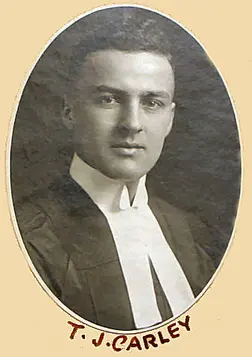In a bold move aimed at reshaping the educational landscape of South Dakota, a pivotal bill described as an “opportunity for a phoenix to rise out of the ashes” has advanced out of the legislative committee at the Capitol in Pierre. This legislation, spearheaded by State Senator John Carley, R-Piedmont, seeks to offer property tax credits for families opting for private school, homeschooling, or other forms of alternative education.
Contact South Dakota Legislature | Contact Department of Revenue

John Carley
Reviving School Choice: A Phoenix Rises
This bill is described by supporters as a potential catalyst for educational reform, reigniting discussions in a state known for its wide open prairies and commitment to individual freedom. Tonchi Weaver, a Rapid City resident and representative of the conservative Citizens for Liberty, passionately labeled the bill as a reinvention of prior failed attempts to introduce school choice in South Dakota. “I think this is a conversation that needs to be had,” she emphasized during her testimony, reinforcing the growing demand for educational alternatives.
The legislation, if enacted, would cap tax credits at 80% of what the state allocates for a public school student—a figure approximated at $6,000 per taxpayer. Property owners could leverage these credits for their own children or altruistically contribute to other children’s educational expenses.
Economic Implications: Weighing the Costs
Yet, this progressive move is not without its financial implications. The bill is projected to cost South Dakota’s school districts between $14 million and $21 million annually in lost revenue. Dianna Miller, a lobbyist representing large school districts, argues that such a shift would transfer more financial responsibility onto the state, primarily funded by sales taxes. “You’re cutting the local effort… by giving a tax incentive to people,” she warned, highlighting potential challenges in maintaining education funding integrity.
This concern was echoed by the state Department of Revenue, which opposed the bill due to the anticipated administrative burden it would place on county and state officials. Moreover, detractors have raised accountability concerns, noting the absence of robust mechanisms to ensure that children benefiting from the program are receiving adequate education. Sam Nelson, a lobbyist for the Sioux Falls School District, criticized the bill’s prioritization of personal over community needs, likening it to residents choosing not to support infrastructural essentials.
A Contentious Debate: Perspectives and Policy
Despite these objections, the Senate Education Committee voted 4-3 in favor of advancing the bill to the full Senate, propelling South Dakota into a vital discussion on the future of education funding and access. This decision underscores a profound ideological divide on how best to nurture the state’s educational ecosystem while respecting its unique cultural ethos characterized by self-reliance and community values.
As South Dakota continues to navigate this complex issue, the outcome of this legislative effort may well set a precedent for other states grappling with similar challenges. South Dakota, known for iconic landmarks like Mount Rushmore and the breathtaking Badlands, stands at a crossroads, balancing its pioneering spirit against the foundational need to support all children’s education.
This evolving narrative about choice and responsibility in education reflects broader themes of opportunity and resilience, resonating deeply within the South Dakota populace and beyond. All eyes will be on the full Senate as it deliberates on this pivotal issue, potentially reshaping the educational landscape to reflect the state’s commitment to innovation and individual empowerment.
Stay tuned as South Dakota’s educational saga unfolds, promising further analysis and updates in the coming sessions. For additional insights and updates, subscribe to our morning headlines.